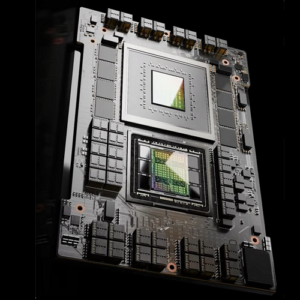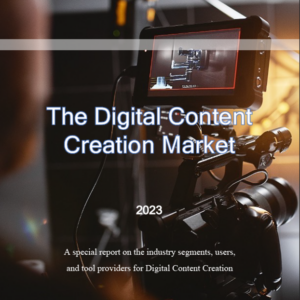$8,000
The Worldwide CAD Report
JPR’s CAD market report has been published since 2005. As a result, it comes with a strong historical perspective as well as current data on the rapidly changing CAD industry. The 2024 report provides information on market segments, individual company market shares, new workflows, and new players.
Description
The 2024 Worldwide CAD reports provides a big picture view of a critical industry, which influences the development of computer hardware, design practices, manufacturing methods, and construction.
Features:
- Charts market trends, industry influences, and provides segmentation information
- Provides in depth profiles of the leading CAD vendors, their market shares, and product development
- Provides estimates of user bases for the industry, major markets, geographical regions and major vendors
- JPR has collected data from over 36 CAD companies offering more than 53 products
- Detailed information on 10 market leaders including Autodesk, Aveva, Bentley Systems, Dassault, Graebert, Hexagon, Nemetschek, PTC, Siemens Digital Industries, and Trimble.
Worldwide CAD Report Executive Summary
Computer-aided design software is used for design documentation and mechanical design. It is an automated alternative to manual drafting and aids manufacturing and development by offering detailed product diagrams, material information, tolerances, dimensions, and other essential specifications. The digital revolution of the last 20 years drove CAD to become the centerpiece of a modern digital reality.
The Computer-Aided Design software market is forecasted to reach US$16 billion by 2027, driven mainly by the increased use of Digital Twin systems. From 2024 to 2027, the demand for CAD solutions is expected to grow at a compound annual growth rate approaching 7%, reaching an estimated value of over US$20 billion by 2033
The big players in the market are Autodesk, Dassault, and Siemens, which control over 65% of the market. Secondary players like Bentley, Hexagon, and PTC capture another 20%. The rest of the market is shared among more than 15 other companies. And the big ones are getting bigger.
The market is almost evenly divided between EMEA, APAC, and North America, with the rest of the world capturing a mere 4%.
2D CAD still has a role to play, and even with its lower average selling price, it accounts for 45% of the market. In terms of users, it dominates with all the free 2D programs available. However, its growth rate is low and declining for the not-for-free programs.
Nonetheless, overall future growth is anticipated to sustain its strength as industries increasingly depend on digital technologies to enhance efficiency and quality.
2D CAD still has a role to play, and even with its lower average selling price, it accounts for 45% of the market. In terms of users, it dominates with all the free 2D programs available. However, its growth rate is quite low and declining for the not-for-free programs.
AI’s incorporation—some say intrusion—combined with organic CAD concepts is changing how drawings and models are created, distributed, and integrated into the total project program.
Nonetheless, overall future growth is anticipated to sustain its strength as industries increasingly depend on digital technologies to enhance efficiency and quality. 3D CAD software is vital in this landscape, enabling designers, engineers, architects, and other professionals to craft and modify 3D models of various entities like products and buildings. Its significance spans diverse sectors like manufacturing, construction, and engineering. Factors like the expansion of the manufacturing sector, infrastructure projects, and the integration of advanced technologies such as metaverse, 3D printing and virtual reality contribute to the rising demand for 3D CAD software.
The ongoing integration of design tools with data, all kinds of data, including planning and regulatory data, sensor data, and maintenance records, promises a profitable digital ecosystem..
Worldwide CAD Table of Contents
- Executive summary
- Introduction
- Trends
- Technology developments
- Summary
- Artificial intelligence
- Will AI replace CAD? Not today
- AR/VR/MR/XR
- Cloud-based computing
- eCAD
- EDA
- Generative design
- Internet of Things
- Real time
- Rendering
- Simulation and analysis
- Transition in Emphasis to 3D
- The 2D Contenders
- The 2D Overview
- 3D CAD
- Opportunity and Danger
- Conclusion
- CAD 2024 company’s Strengths, Weaknesses, Opportunities, and Threats
- Introduction
- Autodesk
- History
- Products
- Financials
- Aveva
- History
- Products
- Financials
- Bentley Systems
- History
- Products
- Financials
- Dassault Systèmes
- History
- Products
- Financials
- Hexagon
- History
- Products
- Financials
- Nemetschek
- History
- Products
- Financials
- PTC
- History
- Products
- Financials
- Siemens
- History
- Products
- Financials
- Trimble
- History
- Products
- Financials
- Overview of the CAD market
-
- Summary
- Autodesk
- Aveva
- Dassault Systèmes
- PTC
- Siemens
-
- Vendor transformation via mergers and acquisitions
- Autodesk
- Aveva
- Bentley Systems
- Hexagon
- Nemetschek
- PTC
- Siemens
- Trimble
- Conclusion
- Market segments
-
- Summary
- Trends in AEC
- Summary
- Opportunities in AEC
- AEC transformation
- Opportunities for BIM
- OpenBIM
- BIM in the cloud
- Autodesk’s BIM 360
- Bentley ProjectWise 365 and Synchro
- BIMserver
- Bricsys 24/7
- Graphisoft Teamwork and BIMcloud
- OpenBIM
- The Opportunities in construction
- The AEC Metrology Revolution
-
- Conclusion
- CAD in Manufacturing
- Manufacturing market
- Conclusion
- Process, Power, Infrastructure & Marine
- PP&M trends
- GIS
- MAC CAD Market
- Mac 3D
- The Primary CAD Users
- Expectations for 3D CAD
- Geographic distribution
- Forecasts
- Conclusion
- Multi and mega monitors in CAD
-
- Summary
- In CAD, you need to see more
- Multiple displays come to the PC
- Productivity
- Conclusion
-
- Why workstations matter in CAD
- Summary
- Conclusion
- Rendering
-
- Summary
- The ray-tracing market
- CAD
- Importance of material libraries
- Open source and software development
- Conclusion
- Summary
-
- Metaverse
- Omniverse
- The Nucleus
- Omniverse Kit
- Omniverse workflows
- Simulation
- Omniverse collapses the pipeline
- Depositories are not collaboration tools
- USD for CAD
- Gateway to 3D
- Conclusion
- Index




